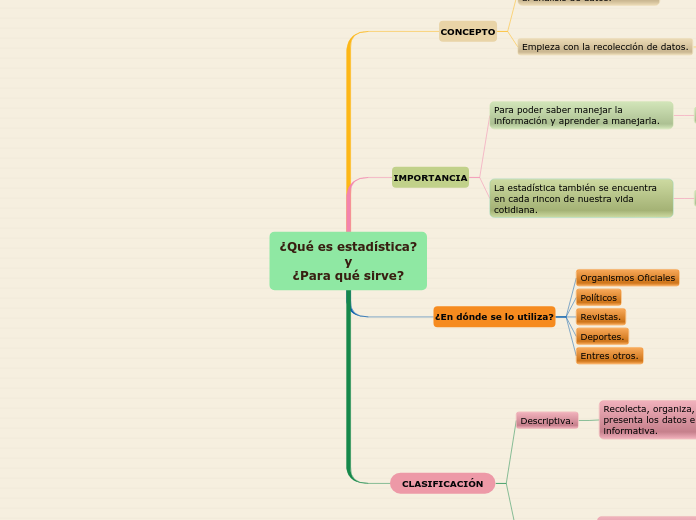door jamilex sangache 4 jaren geleden
256
¿Qué es estadística?y¿Para qué sirve?

door jamilex sangache 4 jaren geleden
256

Meer zoals dit

To name your story, you have to think about the overall message and what you want your audience to understand from the story. Also, make it relevant and easy to remember.
Se toma una muestra es decir:
Con esto de trata de predecir lo que pasa en la población.
Se selecciona algunas personas u objetos para realizar el estudió.
Es complicado obtener información de toda la población sobre algo.
Predice lo que esta sucediendo o lo que va a suceder en una población.
Se enfoca en:
Presentación de datos.
Clasificación.
Recopilación.
Proporciona información de lo que pasa en ese momento.
The ending of a story is essential. We all know that if the ending is weak, what happened before loses its importance. So make it unpredictable, but fair. A resolved ending answers all the questions and ties up any loose threads from the plot.
This is the closure section of the story.
See examples of possible outcomes below:
This is the moment when the main character surpasses the last obstacle and finally faces their greatest challenge.
The climax usually follows one of these patterns:
Type in your answer.
The middle of the story is where you add layers of complications that will lead to the end. Reveal more about the character's journey. Did their personality go through changes? How did they overcome the challenges? And as you build up the story’s central conflict, make it more personal to that character. Also, from the middle act, you have to lead into the final act.
O simplemente en la escuela para conocer el promedio.
Para revisar los rating de televisión o radio.
El tipo de moda para saber que tipo de ropa esta gustando mas.
En deportes para medir el mejor equipo.
Each story has a main character and that character usually needs to solve a problem or challenge. The character's challenge is the one that creates tension throughout the story.
In most stories, there are 3 challenges. The number 3 is a mystical number symbolizing completeness. Try to come up with interesting challenges with which your character needs to struggle.
See a few examples below:
Pertinentes.
Efectivas.
In the beginning of the story (or the exposition), you will need to introduce the setting and characters. You might also want to introduce the main conflict. This part of the story is important because it gives the reader necessary background information and maybe even a first insight into a character’s personality.
The setting (time & place) of a story can change throughout the plot.
Interpretarlos.
Presentarlos.
Analizarlos.
Organizarlos.
Characters are essential to a good story. Usually, the protagonist(s) is/are the most affected by the plot. Introduce a character by focusing on their actions, interests, and occupation, as the physical appearance doesn't make a difference in most cases.
Type in the name of your character.